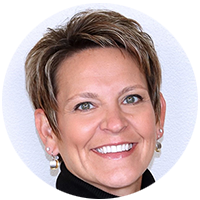News July 13, 2022
‘Full Steam Ahead’: Distributors Remain Positive as Sales Roll in
Some economic indicators point to a possible recession in the coming months in North America. Yet distributors say buyers have yet to pull back on spending.
Zero. Nada. Goose egg. That’s Bank of America’s recent forecast for U.S. GDP growth in Q2, based on weak consumer spending, a drop in inflation-adjusted household earnings and, according to the Institute of Supply Management, a decline in manufacturing activity not seen since May 2020, immediately after the first COVID lockdowns.
But you don’t have to analyze financial data to know the state of the North American economy is worrisome. Grocery and gas costs are sky-high; materials are slow to arrive at market, stalling construction and infrastructure projects; and skeleton crews of burnt-out employees work long hours due to a lack of staff that’s affected virtually every industry.
Inflation in the U.S. reached 9.1% in June, a 40-year high (in May, it hit 7.7% in Canada, a nearly 30-year high). The Fed raised interest rates three quarters of a percentage point last month to a range of 1.5% to 1.75%, the largest increase in nearly 30 years, in an effort to cool off price surges. There’s been talk of doing the same again this month. The Bank of Canada is also expected to raise interest rates again by 0.75% in July, bringing the lending rate to 2.25%, which analysts say could cause further economic slowdown.

That’s the stark reality for businesses across North America and the customers they serve. And yet, according to distributors, end-buyers of promotional products have yet to slow their spending in a significant way due to future economic concerns.
“We haven’t seen clients scaling back,” says Lisa Hubbard, vice president of sales and marketing at Top 40 distributor The Vernon Company (asi/351700). “We’ve seen the opposite. Our buyers across the country are still going strong, and our order size is up. They’re aware of the economic situation, so I wouldn’t say they’re optimistic, but they’re seeing enough ROI right now to continue buying branded merch. We had a record third week of June.”
Promo Proves Resilient
While the industry has not been immune to supply chain and staffing challenges, distributors say they continue to see healthy demand from customers. It’s been a gradual recovery that the promo market at large has looked forward to since Q2 2020, when the Counselor Confidence Index fell to an all-time low of 54 (it stood at 108 in Q1 of this year). Since Q2 of 2021, distributors have continued to increase their sales when compared to the same quarter a year before.
At Top 40 distributor Geiger (asi/202900), Chris McKee, senior vice president and chief revenue officer, says business across all regions, even Europe, is moving forward. “We’re not seeing any indicators that clients are pulling back,” he says.
But it’s not just Top 40 companies that have hungry buyers. Rachel Leone, president of Leone Marketing Solutions (asi/251966), a small distributor, says she’s been overwhelmed with client demand this summer, when she would have expected a significant slowdown due to seasonal buying changes and, particularly this year, the gloomy economic outlook and inflationary pressures.

“Clients are spending like crazy. I can’t figure out why, but I’m not complaining.” Rachel Leone, Leone Marketing Solutions
“Things are insane at the moment,” she says. “July is usually a slow month for me, but I’m not seeing any signs of things slowing down. Clients are spending like crazy. I can’t figure out why, but I’m not complaining.”
The team at Worldwide Sport Supply (asi/603943) is so busy that management has been compelled to increase staff and equipment ahead of what they expect to be a bustling Q3. They welcomed four new employees in May and June, as well as a new eight-head automatic screen printing press and six-head embroidery machine in recent weeks.
“We’re not seeing any downturn in orders,” says owner TJ Ciaravino. “In fact, we saw an increase in both hard goods and apparel throughout Q2 and don’t feel any type of slowing down. Inventory levels continue to grow, and we’re preparing for a heavy Q3 and Q4 sales season.”
At Boost Promotions (asi/142942), President and CEO Chris Faris says clients have not yet expressed concern about a recession. In fact, the company had its best Q1 in the 15 years since it began and had a solid second quarter. “Our clients are moving full steam ahead,” he says, “especially with COVID restrictions being lifted.”
In Canada, people are still celebrating life after COVID by spending their long-held marketing budgets. Scott Hulbert, managing director of ideavation (asi/229801), says reopening there trailed the U.S., so they’re still riding the enthusiasm wave. “I haven’t heard a single person in promo here mention ‘the R word’ yet,” he says.
Meanwhile, Craig Nadel, president of Top 40 distributor Nadel (asi/279600) and a member of Counselor’s Power 50 list, has noticed clients becoming a bit more cautious as Q2 progressed. April was a big month for the California company, though May, while better than the same month a year before, slowed a bit.
“We’re seeing a slight decrease in orders, I think because of the slowing economy,” he says. “We may soon see more orders for lower-end goods, which might be due to the return of event giveaways.”
Jake Himelstein, president of Top 40 distributor BAMKO (asi/131431), says that, although sales are healthy now, distributors should be prepared for a downturn. “Customers are being cautious with their marketing budgets,” he says. “Distributors need to ask themselves: What happens if business drops by 15% or 20% again? We like to be ahead of the curve, not reactive.”
Returning Opportunities
End-buyer purchasing trends now show some signs of shifting as the COVID era fades. Customers of The Vernon Company are still intently focused on employee engagement, with kitted “welcome” bundles being sent to homes, but additional opportunities related to events are returning in a big way.
“Companies want to take care of employees,” says Hubbard. “Hiring and retention are more important to them right now than scaling back. They’re concerned about inflation, but there’s still competition among employers for staff. They want to offer an experience. And now, we’re also seeing trade shows and events coming back.”
Virtually every target market for Worldwide Sport Supply is continuing to buy, says Ciaravino. Schools have COVID relief funds they’re looking to spend, corporations have budgets they haven’t drawn on in more than two years, summer sports teams are “buying at record levels,” and the sheer volume of back-to-school online stores has his production team gearing up for a busy Q3. “We’ve never started building out stores for the fall this early in the summer,” he says. “Our customers haven’t been cautious at all.”

“If things continue as they’re going, we’re going to be busy through Christmas. Right now, we’re seeing significant demand.” Scott Hulbert, ideavation
Hulbert says proactive buying, something that suppliers and distributors have encouraged for years, has been a silver lining of COVID and ongoing supply chain snafus. One of his clients is planning a brand activation for a breast cancer event in October, and another is already purchasing winter headwear.
“For the first time in two years, activations are happening, and clients are spending,” says Hulbert. “I don’t think things will slow down unless there’s a major drop in the economy, like the fall of 2008. If things continue as they’re going, we’re going to be busy through Christmas. Right now, we’re seeing significant demand.”
Over a year into ongoing COVID-era challenges, Leone’s clients are generally understanding about delays and have also been placing orders earlier than in previous years. “My customers are flexible, thank goodness,” she says. “The supply chain is getting better, but it’s still a challenge. I hope it continues to keep up with demand.”
Healthy Quantities, High-End Products
Over the past two years, clients of Nadel have asked for premium items, including brand name products and those made with sustainable materials. That demand continues, but Craig Nadel says more orders for lower-end goods – which has yet to happen at his company – wouldn’t necessarily be directly tied to a recession; it could be the return to large-scale events and the need for giveaways, versus kitted bundles of high-end products sent to homes.
“As larger events start happening, we’ll see a drop in the average per-item spend,” agrees Memo Kahan, president of Top 40 distributor PromoShop (asi/300446) and a member of Counselor’s Power 50 list. “It’ll be neither a surprise nor a downward trend in the market. Right now, our average order size remains similar to those over the last few years.”
Despite the turbulent economic news, clients’ orders at The Vernon Company have actually grown steadily in size over the past few months. “Customers are concerned about inflation, but it hasn’t been enough to draw back,” Hubbard says.

“Customers are concerned about inflation, but it hasn’t been enough to draw back.” Lisa Hubbard, The Vernon Company
Meanwhile, sales are coming in quickly at Geiger, where McKee says a sales rep recently closed on her largest order ever (one that included high-end, eco-conscious products), as well as at Top 40 distributor HALO (asi/356000), where retail brands and those with a giveback component continue to dominate. “We haven’t experienced a drop in per-client spend, or clients migrating toward less-expensive items,” says senior vice president Terry McGuire.
Despite the economic headwinds, customers are still willing to spend more for a quality item rather than something “trinkety,” says Hulbert. “Nothing is throwaway these days,” he adds. “They’re going for the $2 pen, not the 49-cent one. Their choices are thoughtful, brand-name, on-trend and a better use of money than disposable stuff.”
Still, Hulbert says a possible slowdown is definitely in the back of clients’ minds. Instead of buying huge quantities and having ideavation warehouse it and then drawing on it over six months or a year (and then being stuck with stock they can’t move during an economic downturn), clients are now sending in monthly POs and having product shipped immediately. “COVID has taught businesses how to be smarter and more resilient during slowdowns,” he says.
Adapting to Persistent Challenges
Meanwhile, the operations woes that have plagued the industry over the past two years, including supply chain delays and a dearth of staff across the board, haven’t been solved yet and distributors aren’t sure when they will be. McKee says they’re still contending with split orders because of inventory delays, along with near-daily pricing fluctuations.
“The increased price of oil increases the cost for plastics too,” he says. “The labor side is also tough. Suppliers might get containers in every day, but if they don’t have people to unload and pick and pack, that’s a challenge.”
Faris says they’ve seen container rates and ocean freight costs coming down a bit recently, and containers have been quicker to arrive at ports from overseas. Before COVID, average arrival time was about 20 days, which increased to about 50 or 60 days at its recent peak. That’s come down slightly, though lack of staff at ports is still an issue.
“I don’t think it’ll be all cleared up this year,” he says, “but hopefully after Chinese New Year we get back to something approaching normal.”

“I don’t think inventory issues will be all cleared up this year, but hopefully after Chinese New Year we get back to something approaching normal.” Chris Faris, Boost Promotions
BAMKO diversified its supply chain away from China even before COVID, and now sources from India, Bangladesh, Haiti, Peru and El Salvador, where shipping to the U.S. is easier. “We do what we can, like forward-booking container space,” Himelstein says. “But there’s just a general lack of people to do things.”
Ciaravino says T-shirt stock, in particular, has been challenging to procure, but suppliers are gradually showing improvement. Hulbert agrees, pointing out that apparel inventory presents a particular challenge. A client needs black T-shirts or polos, for example, and several suppliers will be all out of XL. It’s also been tough to keep kitted bundles affordable when costs for paper and stickers have increased every month for nearly two years. That forces Hulbert to buy several months’ worth at a time in order to lock in current prices. Meanwhile, he continues to look for new prospects in a changing marketplace.
“We’re all doing more with less,” he says. “But that’s also an opportunity. Short-staffed clients have us handle their programs, including warehousing and fulfillment. That’s a new area of growth for us.”
